Android Community |
- Google Earth updated, optimized for Android Tablets
- HTC Flyer Stylus gets priced for $79.99 at Best Buy
- Barnes and Noble announcing new e-Reader tablet May 24th
- HTC Sensation clears the FCC, T-Mobile awaits
- Sony Ericsson XPERIA mini and XPERIA mini pro Hands-On
- Sony Ericsson XPERIA mini and XPERIA mini pro Officially Announced
- Droid X getting official Gingerbread OTA soon?
- Samsung Galaxy S II Coming Today? FCC Says Possibly
- Samsung Reveals SENS-240 and Hybrid Tablet Navigation Tablet
- Vodafone HTC Desire HD Android 2.3 Gingerbread update goes live
- Motorola XPRT and Titanium revealed: New(ish) phones, Old Android
- Samsung Galaxy S II smartphone sells like crazy in first three days
- Acer Iconia Tab A100 and A101 to launch May 14
- Notion Ink Adam gets Kindle support
- Official Android Community Wallpapers [May 2011]
- HTC Marvel coming to T-Mobile after the Sensation and Doubleshot
- Plants vs Zombies coming to an Android near you soon
- CyanogenMod 7 running strong, Installed on over 200,000 devices
- How Intel’s New 22nm 3D Tri-Gate transistors will Blast Android into Outer Space
- Copy Angry Birds progress to multiple devices without root & for free
| Google Earth updated, optimized for Android Tablets Posted: 05 May 2011 11:27 AM PDT A new version of Google Earth is now available and it has been updated and optimized for the larger screens of android tablets, more specifically Android 3.0 Honeycomb. I remember when Google Earth first launched I loved it, and the thought of it on my G1 was awesome. Now it is available for most android phones and it shows how powerful it and android truly is. Google has updated it for not only the larger screens, but the more powerful processors we are seeing also.
They have introduced some pretty cool things like fully textured 3D buildings, so your tour through the streets of Manhattan or Las Vegas will look more realistic than ever. Some of the other much welcomed changes are things like the “Action Bar” up top that will allow users to fly to their location, quick toggles for different layers such as the new 3D buildings and more. Google mentions, “Moving from a mobile phone to a tablet was like going from a regular movie theatre to IMAX”, and that the entire experience has been increased and is great on the larger screen. I’d have to completely agree with them. Just as the photo above shows, I tried the fly to location feature and went to the Colosseum as they mention and pictured above. It sure is awesome. Being able to float around and see it in full 3D is quite fun. Then i took off and went over to the Trevi Fountain in Italy, that is a sight to see if you haven’t done it with Google Earth already. Get the new app in the Android Market now by clicking here. [via Google Blog] ) |
| HTC Flyer Stylus gets priced for $79.99 at Best Buy Posted: 05 May 2011 11:01 AM PDT Recently the HTC Flyer has went up for pre-order at Best Buy. The price listed has been $499 for a while now, there was however no talk about the stylus they have mentioned quite a bit. Something they are calling a digital pen. This is a feature making the Flyer stand out, you can use the digital pen with your hand resting on the display, and it wont get confused from the multiple touches. Fancy for those that need it.
According to some new details the Flyer specific digital pen will be retailing for $79.99 at Best Buy, as well as a leather pouch carry case that has a spot for the stylus also for $34.99 making this a pretty expensive purchase if someone wants all three. Those wanting both accessories can also get it in a bundle and save a few dollars. For those interested this should be some pretty good news, although that is one expensive stylus. If you would like to see more about this “digital pen” and how well it actually works with your arm on the display check out the demo here. From watching that video it seems to work extremely well and not notice your hand is wresting on the screen as you try and write with the pen. So this could be really convenient for some. Will you be getting the Flyer when it releases? Or maybe just wait for the Transfomer to be in stock again. [via AndroidCentral] ) |
| Barnes and Noble announcing new e-Reader tablet May 24th Posted: 05 May 2011 10:44 AM PDT It looks like a little news has slipped up that Barnes and Noble plan to announce a brand new e-Reader tablet on May 24th. So all you NOOKcolor lovers don’t have to wait long for the good news. For now we don’t have much to go on and this is really all that has been said. We still don’t know what they are planning, but with the success of the NOOKcolor I can only imagine they want to keep things going strong.
Recently the NOOKcolor got updated and they added all sorts of things like email, enhanced browsing, and games. Basically making it much more of a tablet than just a e-reader. So with Barnes and Noble looking to get more into the tablet part of this some are speculating that the May 24th news will be a bigger, better Android 3.0 Tablet that will also do some e-reading very well at the same time. There is also a large possibility that they plan to release something better, yet thinner and more portable to keep up with the Amazon Kindle and to get everyone ready for the summer season, we wont know until more details surface or until the date mentioned above. If some of the stories floating around are true that Amazon is building a Honeycomb 3.0 Tablet, then that would probably make Barnes and Noble’s case to release a similar device even more likely. We will see in the coming weeks. [via Phandroid] ) |
| HTC Sensation clears the FCC, T-Mobile awaits Posted: 05 May 2011 10:16 AM PDT The HTC PG58100 (more popularly known as the HTC Sensation) has now officially cleared the FCC, it is now ready to go for all of us here in the U.S. According to T-Mobile, it is coming but no date has been revealed other than “summer”. So we are still waiting for more details on that. We did get this possible tip that it will be releasing on or around June 8th. We will see.
Along with the FCC filing we see all the usual stuff about wifi, bluetooth and all those cameras we have come to expect from our favorite and top Android phones so I wont go into details here, but they were all present as you would have guessed. There was a little confusion at first as some were calling this the HTC Doubleshot, according to a few sources and from leaks we have previously seen the Sensation, and the Doubleshot are two different devices. The Doubleshot being the internal name, and the official name we expect to be the MyTouch 4G Slide when it launches on T-Mobile also.
Leaked files show the Doubleshot to have PG59100 as it’s model number, different from the Sensation indeed. The more sweet phones on T-Mobile the better, they sure don’t act like they are being bought by AT&T. Just in case all these code names and filing has you a little confused the Sensation is that beastly 4.3″ dual-core phone we have covered plenty. Check out our hands-on here to get more familiar again. For now it is up to the carrier as to when this phone is released, so we will wait patiently til we get more information. [via UnwiredView] ) |
| Sony Ericsson XPERIA mini and XPERIA mini pro Hands-On Posted: 05 May 2011 10:15 AM PDT We’re live at a lovely Sony Ericsson event via our sister-site SlashGear in foggy-ol-England where we’re being allowed to peek at both the XPERIA mini and the XPERIA mini pro, both of which are planned for release in August of 2011. These phones are essentially the same in specifications save for the full QWERTY keyboard included on the pro. These devices may be tiny, but they’re not the itty bitty fishes that physical smallness of the past would have us believe they’d be – 1GHz Qualcomm Snapdragon chips’ll do that.
They’re both made mostly of plastic, but feel tough and again, not in accordance to past tiny phones, they don’t feel cheap. They do feel a bit on the “plump” side, but they’s small nonetheless. Sony Ericsson has included their own auto-correct software on these devices along with brand new Facebook on XPERIA integration. It works, but whether or not people will find it appealing remains to be seen. The displays are small in comparison to their motors, 1GHz processors for a 320 x 480 display is an odd combination to be sure. The last version of this phone came packed with a now-tiny 600MHz processor, this new 1GHz blowing its pants off while providing the reasonably speedy experience that choosers of this perhaps well-balanced phone are looking for. Then there’s the 4×4 concept. Each of your four hotspot corners now open up to 4 icon spots where you can place whatever you like and have at it at a single tap. It’s basically smooth and utterly intuitive. Have a look at our hands-on video courtesy of our man in the UK, Chris Davies, and enjoy the gallery below, complete with a radically odd comparison between the XPERIAs and the Galaxy S II. Also see a slightly different view of the situation over on SG.   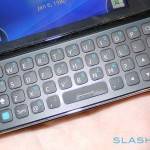     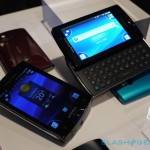 ) |
| Sony Ericsson XPERIA mini and XPERIA mini pro Officially Announced Posted: 05 May 2011 09:49 AM PDT Our good pals at Sony Ericsson have just delivered the goods on the XPERIA mini and mini pro, a couple of devices that they say are the smallest HD smartphones in the world. What on earth does that mean? Let’s talk about it below. Meanwhile, these devices both have Android 2.3 Gingerbread running on them, can grab video at 720p, and use Sony's BRAVIA engine along with Sony Ericsson's custom UI. The big difference between then is that the XPERIA mini is a touchscreen-only device while the mini pro includes a slide-out full QWERTY keyboard for your tapping enjoyment.
Colors, colors! These phones come in a whole batch of different outer casing colorings, the XPERIA mini coming out with white, black, blue, or dark pink. The XPERIA mini pro, on the other hand, will be released as white, black, pink or turquoise. Both of these devices will be out in August of 2011, and the only place we know either of them will be carried thus far is Vodafone UK, and that’s just the mini pro – but surely they’ll be coming to the USA as well, right? Both phones have basically the same specs aside from the keyboard: a 3-inch 320 x 480 scratch-resistant touchscreen, 1GHz Qualcomm Snapdragon processor, 320MB of storage and a microSD card slot with included 2GB card included (max capacity not yet known.) For connectivity you’ll find quadband GSM/EDGE, UMTS/HSDPA, WiFi, AGPS, Bluetooth, an FM radio and a 3.5mm headphone jack. On the back there’s a 5-megapixel camera with autofocus, LED flash, and face-detection. A 1200mAh batter is included in each of the different phones, that being 30-percent better than the last version of the mini. As far as UI, there’s still those fashionable four shortcut corners you love so much, but now each of them act as a shortcut to four icon spots for whatever you may want to place there. Then there’s a Facebook collaboration – one called “Facebook inside XPERIA” – adding a link button in the “most used areas” of the devices like picture gallery, music player, phonebook, and calendar. This same functionality will be offered as a download to XPERIA Play and XPERIA Arc later this year. Behold them both, and have a look in the press release below for the whole tiny story.     ) |
| Droid X getting official Gingerbread OTA soon? Posted: 05 May 2011 09:40 AM PDT For now this is just a rumor, but with all the leaks of 2.3 Gingerbread for the Droid X it has to be getting close to finished. We reported back in April that the OTA was starting to roll out, but it looks like that didn’t happen. These things take time.
The image above shows the latest leaked build, but that still is not the official version that will be coming OTA. According to sources Motorola has finished the update for the Droid X and submitted it to Verizon for approval, then it goes OTA to handsets. From what we gather the last few were either denied, or sent back for changes as the April release never happened. The leaks are all over the place, and rooted phones have been running the leaked OTA builds for more than a few weeks now. This isn’t an option for everyone though. For those that are still waiting, this is only a rumor but could very well be accurate. Our friends at droidlife mention that the latest version of Android 2.3 Gingerbread for the Droid X has been submitted to Verizon yet again and if approved we could start seeing it roll out OTA (over the air) to handsets starting as early as May 13th. That is next Friday. So either get a leaked build now, or if your stock and not rooted just wait a few more weeks and you should have some tasty Gingerbread soon. [via DroidLife] ) |
| Samsung Galaxy S II Coming Today? FCC Says Possibly Posted: 05 May 2011 08:57 AM PDT The next generation of the best selling Android phone in history is about to break out in the USA – having been selling like the hottest hotcakes over in the UK. There’s an event today that we’ve been invited to by both Samsung and AT&T – this coincides with an FCC filing and approval that’s showing up today, one that clearly points to the Galaxy S II. Could it be? Could the USA be getting the superhero phone this week?
Nay, the phone will not be being released this week, but it’s certainly possible that the phone could be officially announced at this event. There’s also still the Samsung Infuse 4G which, if it were announced after the Samsung Galaxy S II, might look pale in comparison. We DO know that the Infuse 4G is coming to AT&T for sure, too, so we’ll see. Now this FCC filing of the Galaxy S II, what’s the big deal about it? Nothing too earth-shattering, but there are a few fun items. One of them you can find in the gallery below – it’s the sometimes common request for confidentiality letter that companies send out when they’ve got a product that needs to be kept a secret lest blogs should spill ALL the beans early. Then there’s that yellow and blue and red image of the phone – thats indicating locations of the GPS, main, and Wifi antennas for SAR testing – interesting, so very interesting. Everything else you can see in the FCC filing via Wireless Goodness – you gotta give em credit, they find every single FCC filing like they’ve got two eyes plastered on the group at all times. Craziness.     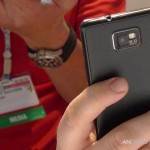 [via Wireless Goodness] ) |
| Samsung Reveals SENS-240 and Hybrid Tablet Navigation Tablet Posted: 05 May 2011 07:39 AM PDT Samsung has a large line of Android smartphones and tablets that have turned out to be quite popular with Android users. The company has unveiled a new product today called the Hybrid Tablet with the SENS-240. The devices are made to work in coordination with one of the Samsung Android smartphones or tablets. The SENS-240 is a car navigation system that can connect to a normal phone using Bluetooth.
The connectivity to the SENS-240 allows the smartphone or tablet to provide all sorts of connectivity like voice, data, voice search, and video and then play that content on the 7-inch screen. I would think this would be more appealing to Samsung Android smartphone users than tablet users. The screen on the Hybrid tablet is 7-inches with a resolution of 800 x 480. Other tablet features include 256MB of RAM, USB 2.0 host, and a SD card slot. The smartphone or tablet can be used as a remote to control the tablet and SENS-240 as well. Pricing and availability are unknown at this time, what do you think of this? It seems like a lot for an extra few inches of space. [via Akihabara News] ) |
| Vodafone HTC Desire HD Android 2.3 Gingerbread update goes live Posted: 05 May 2011 07:28 AM PDT Vodafone has begun pushing out the Android 2.3 Gingerbread update for the HTC Desire HD, only a day after HTC began distributing the generic version of the upgrade. As with the general version, it brings the Desire HD up to the same software level as the HTC Desire S.
In addition to the usual bugfixes, Vodafone’s changelist suggests the following tweaks:
As far as we know, Vodafone is the first UK carrier to get their branded version of Gingerbread for the Desire HD into the wild. Let us know how you get on with the upgrade in the comments. ) |
| Motorola XPRT and Titanium revealed: New(ish) phones, Old Android Posted: 05 May 2011 06:49 AM PDT Motorola has unveiled a pair of new CDMA Android handsets, the Motorola XPRT and Motorola Titanium. The XPRT is a rebadged version of the Motorola DROID Pro, complete with a 3.1-inch HVGA touchscreen, QWERTY keyboard and World Phone capabilities, while the Titanium is a rugged iDEN device to replace the Motorola i1, with a 3.1-inch touchscreen, QWERTY and a Military Spec chassis resilient to dust, shock, vibration, low pressure, solar radiation, high temperature and low temperature.
Bizarrely, the Titanium runs Android 2.1 Eclair (the XPRT gets 2.2 Froyo) which seems almost stubbornly out-of-date. Both handsets have a 5-megapixel camera, WiFi b/g (b/g/n on the XPRT) and Bluetooth, along with a microSD card slot, GPS and push-to-talk. Frankly neither is particularly exciting. The XPRT will go on sale on June 5, priced at $129.99, while availability and pricing for the Titanium will be announced later in 2011. Press Release: ) |
| Samsung Galaxy S II smartphone sells like crazy in first three days Posted: 05 May 2011 04:46 AM PDT The Samsung Galaxy S II smartphone is a cool device that many Android fans were looking forward to getting their hands on. We have known the full specs of the smartphone for a while now. The smartphone officially launched on April 28. The company sold a bunch of the smartphones in South Korea the first few days the device was available. The phone sales were so strong that more moved in the first few days that the original Galaxy S.
Industry sources claim that Samsung sold 120,000 units combined across the three major carriers in South Korea in three days. SK Telecom Co. activated 65,000 S II smartphones. KT Corp sold 40,000 of the phones and LG Uplus Corp moved 15,000 S II smartphones. LG Uplus is the smallest carrier that offers the phone. There is no indication at this point if the sales stayed high after the initial three days of availability. The S II is an impressive little smartphone with an NVIDIA Tegra 2 dual-core processor in some areas and in other areas; it uses Samsung’s own dual-core Cortex A9. Both of the chips operate at 1.2GHz and should have the same performance. The smartphone runs Android Gingerbread, has WiFi, hotspot technology, and a 5MP camera. The screen is a 3.7-inch WVGA resolution offering. [via Yonhapnews] ) |
| Acer Iconia Tab A100 and A101 to launch May 14 Posted: 05 May 2011 04:00 AM PDT We have talked a lot about the new Acer tablets that are coming to stores. The new tablets include the Iconia A100 and A101 tablets and both are Android 3.0 tablets. The A100 and A101 tablets are the same with the difference being the 101 has a 3G modem, and the 100 is a WiFi only tablet. The screen is a 7-inch unit with a resolution of 1024 x 600, and both use capacitive touch technology.
If you have had your eye on one of these tablets since the official press release unveiling them first surfaced in February. Both of the tablets are now on Amazon in the UK for preorder with a price for the A101 at £399. If that price is maintained for the US launch and converted that would make the tablet $661 in the states, which will put it well out of range with the competition. The WiFi only A100 tablet will sell for £299 or about $496. That price is a bit more tolerable, but still makes this tablet cost more than some others that are on the market. I don't think Android 3.0 will be enough to justify the price in many shoppers minds. The shop date on both tablets is listed as May 14. Both use the Tegra 250 dual-core Cortex A9 processor at 1GHz and have 8GB of storage with lots more features. [via CarryPad] ) |
| Notion Ink Adam gets Kindle support Posted: 05 May 2011 02:09 AM PDT Notion Ink has announced that users of its Adam tablet will now be able to read their Amazon ebooks, with the news that the Kindle app is now available for the slate. The app does make considerable sense when you consider the optional Pixel Qi display, which can function in a similar manner to an e-ink panel on one of Amazon’s own Kindle ereaders.
Of course, the Kindle app for Android is nothing new, and so this is more an announcement about Amazon giving Notion Ink permission to distribute it through its download store than anything else. Adam lacks official access to the Android Market, and instead uses its own download system. As usual, there’s Whispersync support so that reading progress is synchronized over all Kindle apps and hardware: you can pick up your Adam and carry on reading where you left off on your Kindle. The agreement is said to be the first of several imminent from Notion Ink. ) |
| Official Android Community Wallpapers [May 2011] Posted: 04 May 2011 07:21 PM PDT You wanted the best, you got the best – the hottest logo in the world, ANDROID COMMUNITY. With it’s evil eyes, perfectly matched Android green bulk, and perfectly set letters – you know you’ve got to have it every which way you can get it! There’ve been some requests on reviews of late for the wallpapers we’ve been using to show off the goods, so here they are. Originally we’d planned on making them all different sizes, but it turned out that a couple standard sizes fit nice enough for us to approve.
Have a look here and see what strikes your fancy. The two sizes are, of course, tablet and handset. The source for perfection is the Motorola XOOM and the HTC Thunderbolt (or any other HTC device with that same display, of course.) The wallpapers were made to fit those two devices perfectly, but with Android’s excellent ability to crop wallpapers to fit whichever sort of pic you want to use, you’ll bet set no matter which one you pick up, no matter which device you’ve got! HTC ThunderBolt [Handset Wallpapers]      These are only the first of many – but the future depends on you! If you see anything you like in any review past or future, speak up! There’s no reason why we can’t share! Motorola XOOM [Tablet Wallpapers]      Also remember that we’ve got the “Glass” boot screen for your full and totally free use – go wild with it! ) |
| HTC Marvel coming to T-Mobile after the Sensation and Doubleshot Posted: 04 May 2011 02:15 PM PDT This is some fresh news from our friends over at TmoNews. According to some recent photo’s that have been found, T-Mobile plans to bring a nice mid-range device in the HTC Marvel, better known as the Wildfire S. You can see our hands-on here. It should come looking pretty similar to the Wildfire S, only with T-Mobile branding and the rest of the goodies assuming T-Mobile doesn’t become AT&T anytime soon.
The HTC Marvel is a nice mid-range phone with a 3.2″ display and sporting a 800 Mhz Snapdragon processor like all other HTC phones. According to the sources it will be coming after the HTC Sensation, and the HTC Doubleshot. Yes they mention it will be after the Doubleshot, a device we still don’t know much about. There is confirmation that the Doubleshot will be the MyTouch 4G Slide. We are unsure if that will be dual-core like the Sensation, but we have already seen a leaked 2.3 Gingerbread build for the MyTouch4G Slide so that is good news.
The HTC Marvel looks very similar to its much bigger and powerful brother pictured above, the HTC Sensation we have heard so much about lately. So for those that don’t need the beastly 4.3″ dual-core goodness that will be the Sensation, feel free to save that upgrade that is coming soon and get the HTC Marvel. As always, it will have that solid HTC build quality, and it looks like the always attractive Nexus One. Will you be getting the Marvel? Or will you hold out for the Doubleshot with its keyboard? Tell us below. [via TmoNews] ) |
| Plants vs Zombies coming to an Android near you soon Posted: 04 May 2011 01:59 PM PDT PopCap games is a name you have probably heard before. They make games for Playstation, Xbox, iOS and Android. The highly popular Plants vs Zombies has been a game Android users have been wanting for a long time, and today we got a little clarification as to when it is coming, that being “soon”. @PopCap_Games tweeted today that they plan to release it the first half of 2011. So within the next two months.
They have said that they are hard at work porting over the game to Android, and hopefully it comes sooner rather than later. Those Angry Birds we often talk about will finally have some real competition once Plants vs Zombies comes out. It is an extremely popular RTS game that plays great on our touchscreen devices.
For now all we know is that it is coming soon, probably in the next two months according to the tweet that is shown above. Back in January we mention that PvZ would be coming this summer, so it looks like that news was pretty accurate and their summer release might just work out just in time. Personally I can’t wait, I love the game. [via PopCap Twitter] ) |
| CyanogenMod 7 running strong, Installed on over 200,000 devices Posted: 04 May 2011 01:02 PM PDT For those that may not be keeping score of our favorite ROM developers CyanogenMod, I have been watching for you and I can now say it looks like they have hit a pretty large milestone. 200,000 users running CyanogenMod 7. That is extremely impressive for the guys from TD. This all started back on the G1 and has grown into something larger than any of them had ever expected. This is only for CyanogenMod 7, this doesn’t count users that for some reason may still be on CM6, or even CM5 from the good ol days.
From the photo you see above, clearly I am doing my part with the CM7 installs. I have it on all 3 of the devices I still own, not to count the others I’ve sold with CM installed. (Took more than a few tries to get that photo timed right, in case you were wondering). I’d throw it on my iPod Touch if I owned one. My G1 is with a friend or it would be in the lineup, can’t forget the Original G. Steve (cyanogen himself) and the entire CyanogenMod team probably never imagined it would get as big, or popular as it is today. With over 30 devices supported officially they are as strong as ever and only getting bigger. This huge milestone of over 200,000 installs is counting all the official devices, as well as what we call “kangs”. A “kang” is a privately compiled version of CyanogenMod that has been done by someone other than the cyanogenmod team. Users can add, and remove features and compile their own builds, as well as customize them for phones that are not supported like the popular Motorola Cliq, or the Droid Eris. Those are both near the top of the list along with the Thunderbolt for top kangs. One of the lead members @ChrisSoyars has recently been tweeting some of the above information and I just had to comment on it. Check it out yourself at stats.cyanogenmod.com. That shows you the complete breakdown and at the time of writing this they are about to break the 210k mark, and 180,000 official installs. I want to take this moment to say well done guys! You are the best for a reason, and we all appreciate your hard work and long nights put toward CyanogenMod.
[via CyanogenMod] ) |
| How Intel’s New 22nm 3D Tri-Gate transistors will Blast Android into Outer Space Posted: 04 May 2011 11:53 AM PDT Are you familiar with Moore’s Law? It’s a trend described by Gordon E. Moore, co-founder of Intel, noting that the number of transistors that can be placed inexpensively on an integrated circuit doubles approximately every two years. What’s that got to do with Android? It’s quite simple – bigger processing power in the same size package. Today Intel has announced its 22nm 3D Tri-Gate transistors, processing technology that they say will bring 50% power reduction at constant performance (that means better battery life) and 37% performance increase at low voltage – a better job for less!
So what is 22nm – what’s that mean? “nm” stands for nanometer, one nanometer is equal to one billionth of a meter. In the semiconductor industry, this unit is used to describe the wavelength of light. All you and I really need to know is that this is the newest, the best, where back in 1989 we were at 800nm, 2002 we were at 90nm, and now we’re all the way down to 22nm. Again, this follows the plan – Intel had their OG Gordon Moore send out a quote on the matter:
Next, what does “3D” stand for here? Hint – there’s no double camera tricky business going on here. It’s got to do with the structure of the transistor. The 3D Tri-Gate transistors form conducting channels on three sides of a vertical fin structure. This build results in less heat transmission, longer battery life in mobile devices, and because of a combo of the high-k gate insulators and strained silicon, improved performance. Intel notes the following to confuse and excite you:
You can expect some other bits that you may or may not be super excited about from an Android standpoint: native PCIe 3.0 and USB 3.0 controllers at the processor level as well as an integrated DirectX graphics core with support for the second-generation of QuickSync. QuickSync is Intel's media encoding/decoding acceleration technology, in case you do not know.
The first application of this technology will be in Intel’s Ivy Bridge processors, demonstrated today on some high-volume CPU’s, as noted by our sister site SlashGear. Have a peek at some videos while we’re at it and see where Intel is at with the project at the moment:         Press Release: ) |
| Copy Angry Birds progress to multiple devices without root & for free Posted: 04 May 2011 11:48 AM PDT What I have for you today is a little treat for all you Angry Birds fanatics out there. I know there is plenty of you. Even if you don’t admit it we know you play it while your bored at work, daily. I’ve looked into this myself and didn’t know it was possible, but we now have a way to backup your game saves and progress on all 3 versions of Angry Birds. Regular version, seasons, and Rio. So now keep your progress on your G1, Thunderbolt, and on your Motorola Xoom (or whatever devices you own) so you never have to replay all the levels unless you want to of course.
This story along with most good things for android, comes from a user at XDA. He has done all the research for us and has all the details as well as full instructions. I’ll post them below for your viewing pleasure as well as link you to his post. This is a way to backup your game saves for Angry Birds without being rooted. So you don’t have to use titanium backup or something like that, just a simple app from the Android Market. Below is a list of all 3 apps, the first two are from the same developer and hopefully he is making an all-in-1 next. Search for these in the Android Market: angrybirdsbackup Instructions: Done. Now you are ready to go, launch the game of choice and enjoy all your progress and saves. If you start the app and the progress is not there try the guide again and make sure you follow the steps completely. Now start gathering those eggs and enjoy your flying birds. [via XDA Forums] ) |
| You are subscribed to email updates from Android Community To stop receiving these emails, you may unsubscribe now. | Email delivery powered by Google |
| Google Inc., 20 West Kinzie, Chicago IL USA 60610 | |



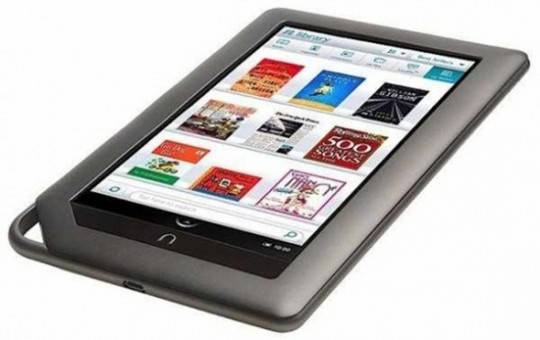
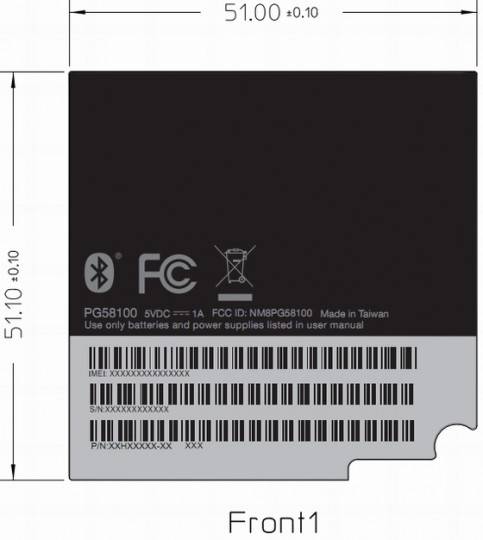

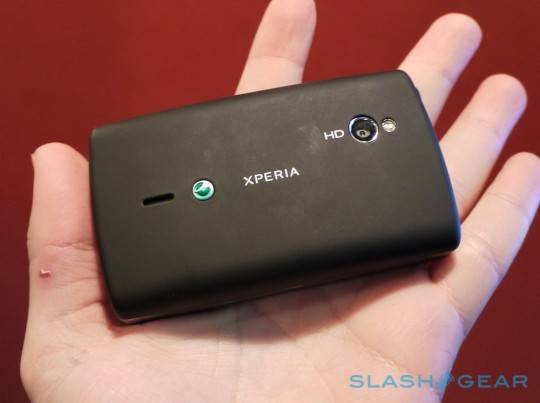

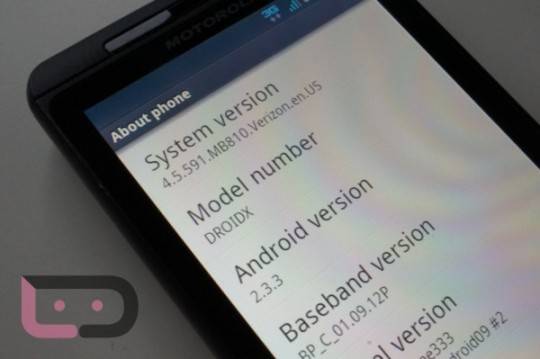


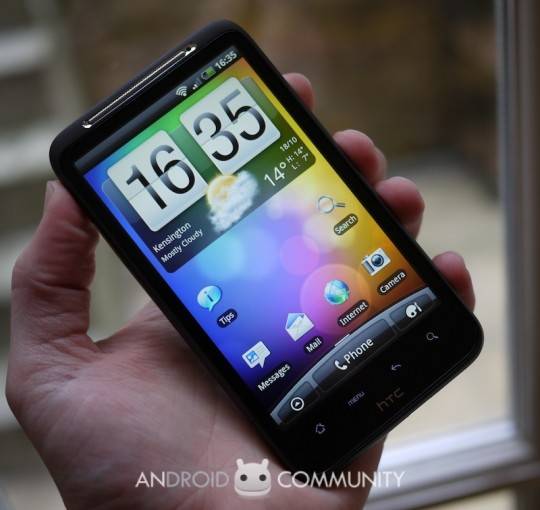
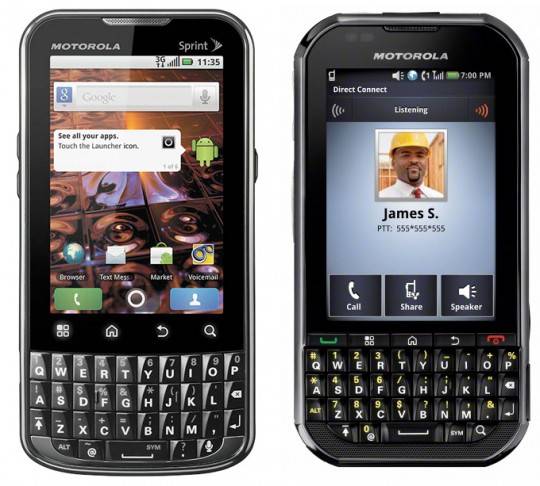
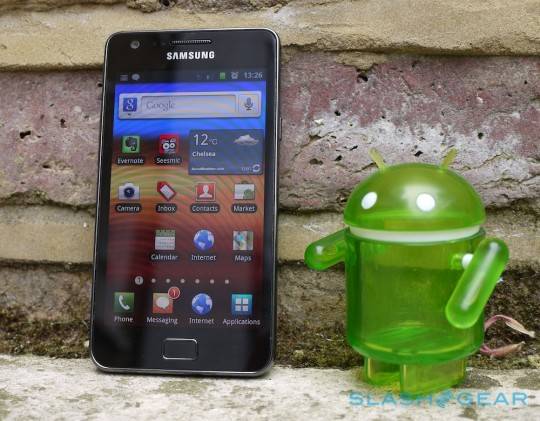


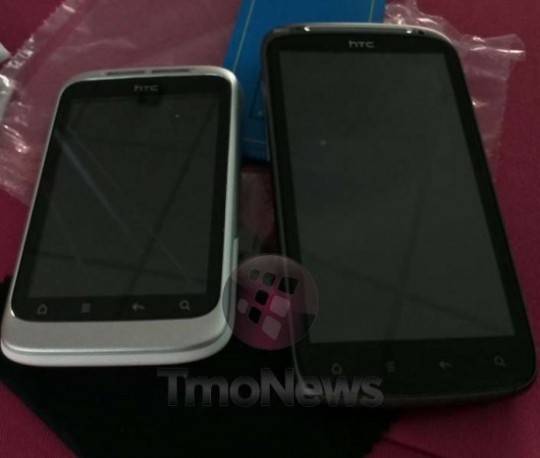



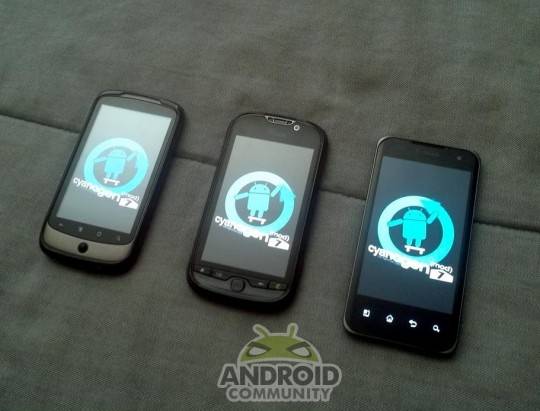




No comments:
Post a Comment